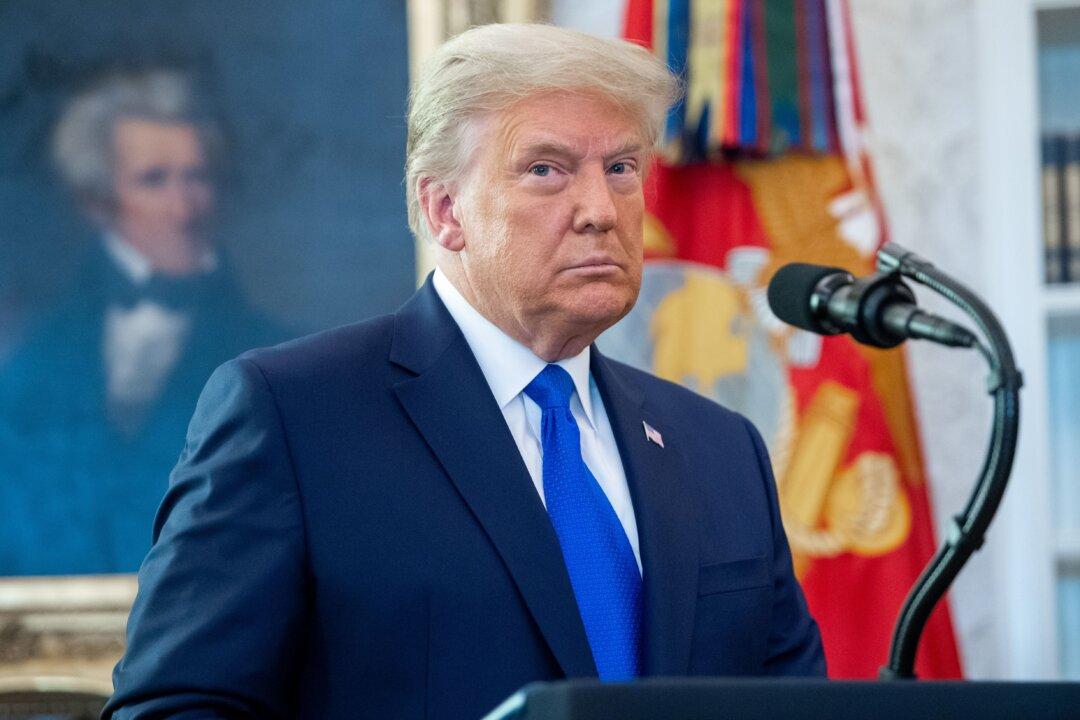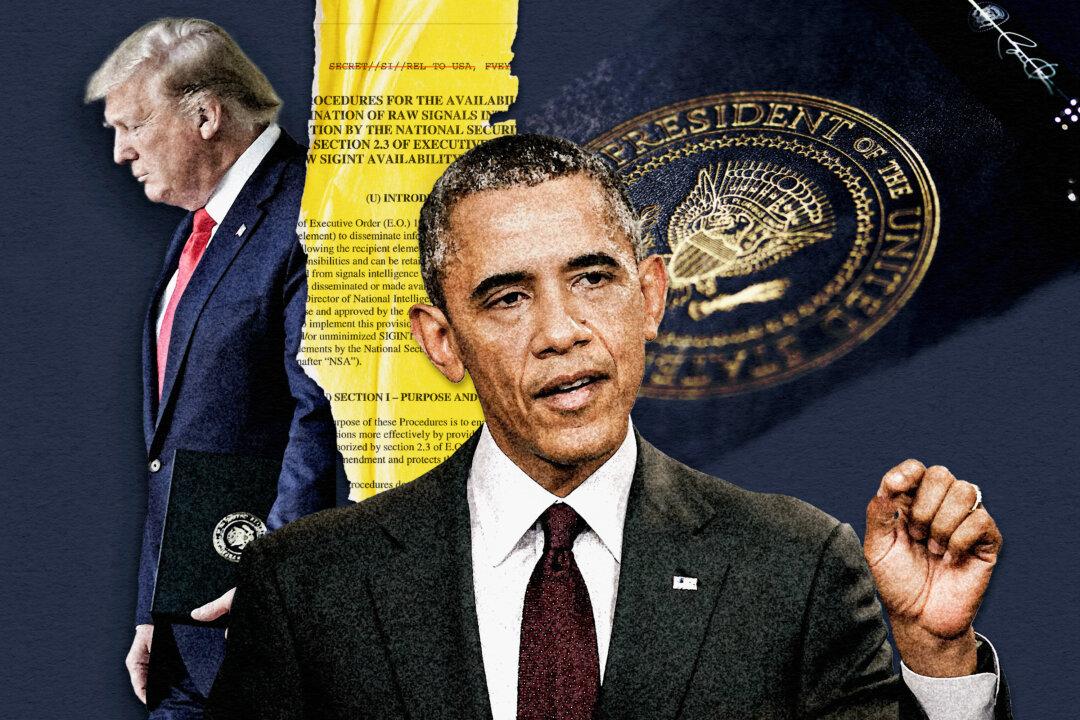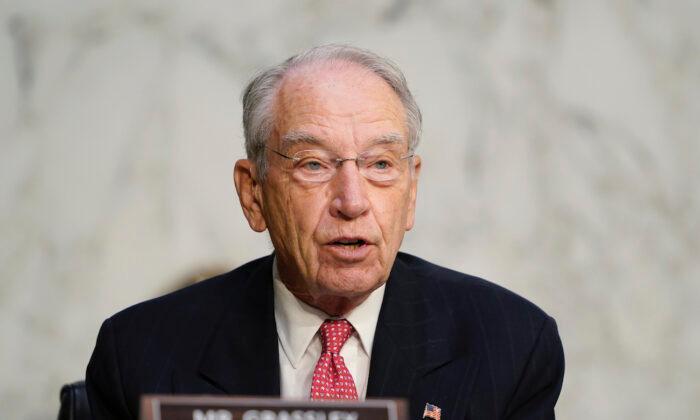News Analysis
“It is Election Night 2020.This time it is all eyes on Pennsylvania, as whoever wins the Keystone State will win an Electoral College majority. Trump is ahead in the state by 20,000 votes…
...In the morning, new numbers show Trump’s lead starting to slip, and by noon, it is below 20,000. Impatient, Trump holds an impromptu press conference and announces:
I’ve won reelection. The results last night showed that I won Pennsylvania by over 20,000 votes. Those results were complete, with 100 percent of precincts reporting. As far as I’m concerned, those results are now final. I’m not going to let machine politicians in Philadelphia steal my reelection victory from me—or from my voters!
Trump insists, by tweet and microphone, “THIS THEFT WILL NOT STAND!!!” “WE ARE TAKING BACK OUR VICTORY.”
So begins the saga over the disputed result of the 2020 presidential election.”
Although familiar, the passage above isn’t taken from a recent article describing the Nov. 3, 2020, presidential election. Rather, it comes from a
55-page paper, published in the winter of 2019 by the Loyola University Chicago Law Journal, called, “Preparing for a Disputed Presidential Election: An Exercise in Election Risk Assessment and Management Election Risk Assessment and Management” by Edward B. Foley.
Foley, a professor who heads the election law program at Ohio University and also is a lawyer and a contributor to The Washington Post, originated the
Blue Shift theory, which holds that Democratic candidates often gain votes as mail-in ballots get counted following the day of the actual election. Although Foley loosely identified mail-in ballots as a cause of the “Blue Shift,” he also played down their impact, concluding his thesis by noting “further insight on just what is causing the observable big blue shift must await more sophisticated statistical analysis.”
Foley’s paper, more of a Democrat war-game analysis, takes readers on a complicated electoral journey that may well prove to accurately foreshadow events through Jan. 20. In effect, Foley has provided a complicated—but thus far surprisingly accurate—electoral roadmap to be used by Democrats.
Indeed, Foley’s paper has already proved remarkably prescient (although he uses Elizabeth Warren instead of Biden), describing how election officials certify the vote by a thin margin for Trump’s opponent as the election tally continues to move away from him in the days following the election.
Foley predicted that provisional ballots would be “attacked as ineligible for counting, as would any absentee ballots not previously counted” because, in Foley’s words “when one is ahead and attempting to preserve a lead, the goal is to shut down the counting process as much as possible” and he also anticipated that “Heavily Democratic precincts would be closely scrutinized for any voting irregularities.”
He also pointed out the role that might be played by the courts, observing that Trump “would certainly be in a more favorable posture if a judicial decree blocked the counting of these extra votes” or even better, if a court ordered that the state’s governor “certify a popular vote victory for his Republican slate of electors.”
Foley also acknowledged “the historical legacy of improper practices conducted by big-city machine politicians.”
“Remember what happened in Florida in 2018, specifically in Broward County: There, the local election administrator acted improperly with respect to the handling of ballots, and that became a potential basis for challenging the entire result statewide. If something similar happened in Philadelphia, one can imagine that Republicans would invoke it as grounds for discarding the results of the canvass …”
Foley’s Concerns Over the Role of Vice President Mike Pence
Foley notes, however, that Trump doesn’t require a court victory in order to “press his case to Congress. As long as he gets the state legislature to appoint his presidential electors directly, and those electors submit their purported electoral votes to the President of the Senate—who happens to be his vice president, Mike Pence—he has a fighting chance.”Foley states that “it is imperative from Trump’s perspective that the state legislature purport to supersede this popular vote with its own direct appointment of the state’s presidential electors—and for Pence to receive from Pennsylvania a second certificate of electoral votes, ones cast for Trump based on this purported legislative appointment.”
The importance of Pence’s role in this scenario is material. Foley acknowledges that while there may be legal arguments at the state level regarding legislative authority (absent a change in current state law), those state legalities are nevertheless subsumed once these “electors send their electoral votes to the President of the Senate—then the President of the Senate has these electoral votes in hand. That is enough for Congress to consider the votes and potentially accept those votes as the authoritative electoral votes.”
“[W]hat matters is whether or not Congress receives a submission of electoral votes from a state, not whether that submission is legally valid according to some standard that Congress might not recognize as binding.”
Foley proceeds with the assumption that Pence, acting as both vice president and president of the Senate, receives two sets of electoral votes from a single state—one certified by the governor, the other from the legislature:
“As January 6, 2021, approaches, the two parties take to cable news and social media to test various arguments as to why their candidate is the winner entitled to be inaugurated as president on January 20. Some Republicans take the especially aggressive position that Mike Pence, as President of the Senate, has the unilateral authority under the Twelfth Amendment to decide which certificate of electoral votes from Pennsylvania is the authoritative one entitled to be counted in Congress and that he, accordingly, will count the certificate from the electors appointed by the state legislature because the Constitution authorizes the state legislature to choose the method of appointing electors.”
Foley cites language from the
12th Amendment, which states “the President of the Senate shall, in the presence of the Senate and House of Representatives, open all the certificates and the votes shall then be counted.” Foley also acknowledges the interpretation that Pence, as president of the Senate, could decide which certificates, and thus which electoral votes are to be counted:
“Given the language of the Twelfth Amendment, whatever its ambiguity and potential policy objections, there is no other possible single authority to identify for this purpose besides the President of the Senate.”
But Foley questions who is to perform the actual counting and states that there’s no constitutional provision in the event of a dispute:
“[T]his language contains no provision for what to do in the event of a dispute, whether with respect to the “certificates” to be “open[ed]” or with respect to the “votes” contained therein. It certainly says nothing about what to do if the President of the Senate has received two conflicting certificates of electoral votes from the same state.”
Foley highlights the importance of Republican leadership, particularly that of Senate Majority Leader Mitch McConnell (R-Ky.) in the decision process of Pence. Foley postulates that if there are only a handful of “renegade Republicans” (he specifies Mitt Romney and Lisa Murkowski) from the Senate who join with Democrats in accepting Biden’s electoral votes from the contested states, “Mike Pence might be tempted to assert a constitutional prerogative to supersede the provisions of the Electoral Count Act,” thereby declaring the “legislatively appointed electors to be the authoritative ones.”
But if McConnell sides with the Democratic-led house, agreeing that the electoral votes certified by the governors are the valid ones, Foley believes that it would “seem impossible as a practical matter for Pence to prevail on his constitutional claim that he is entitled to overrule this bicameral (and bipartisan) determination of which electoral votes” to count.
Foley Promotes Congressional Invocation of the Electoral Count Act
Citing conflicts inherent to Pence deciding the outcome of a contest to which he is a part, along with what Foley refers to as “ambiguities that exist in the text of the Twelfth Amendment,” Foley offers up congressional invocation of its Necessary and Proper Clause power to “enact a statute that provides for an alternative mechanism for resolving a dispute over the electoral votes from a state.”Foley suggests the
Electoral Count Act of 1887 (ECA), currently known as
3 U.S. Code Section 15 is “an entirely appropriate exercise of this Necessary and Proper power as a matter of constitutional authority.” Not without coincidence, the ECA directly contravenes the 12th Amendment and removes Pence as a deciding factor in the election.
In addition to laying out the role of the Senate president, the 12th Amendment sets forth a procedure whereby if no presidential candidate has achieved a majority of electoral votes, a “
contingent election” is held by the House of Representatives, with one vote per state for the new president. An absolute majority—26 states currently—is required.
The ECA, unlike the 12th Amendment, brings both congressional houses into play and shifts electoral power away from constitutionally designated state legislators and toward state governors. It also eliminates the “contingent election” role of the House.
The ECA has been the subject of much controversy, with a significant body of analysis arguing that the ECA is unconstitutional. Indeed, a claim of unconstitutionality lies at the heart of a
lawsuit recently brought by Rep. Louie Gohmert (now
dismissed for lack of standing) which contends that provisions within the ECA “violate the Electors Clause and the Twelfth Amendment of the U.S. Constitution.”
As the Gohmert suit notes, “the Electoral Count Act submits disputes over the “count” of electoral votes to both the House of Representatives and to the Senate” and it “gives both the House of Representatives and the Senate the power to vote, or “decide,” which of two or more competing slates of electors shall be counted, and it requires the concurrence of both to “count” the electoral votes for one of the competing slates of electors.”
Specifically, the ECA diverges from the 12th Amendment in three crucial areas, as
described by lawyer Stephen B. Meister:
“First, while the 12th Amendment grants no role whatsoever to the Senate, the ECA grants the Senate equal control over objections, as they must pass the Senate and the House.”
“Second, the ECA provides that in the absence of objections passing in both houses, the slate certified by the governor of the state controls. This is nowhere provided in the 12th Amendment.”
“Third, by providing for governor-certified slates to be counted even if there are dueling slates of electors—absent objections passing in both houses of Congress—the ECA eliminates and replaces the contingent election procedure set forth in the 12th Amendment, because by virtue of counting the governor-certified slates, the dispute is resolved (though not in the manner set forth in the Constitution, i.e., the 12th Amendment), and never reaches the House (for a contingent election).”
Meister also notes that the ECA “violates Article II, the Electors Clause, because it gives the final say over electors to the state’s executive branch (its governor) while Article II grants that power exclusively, and in a non-delegable way (according to the U.S. Supreme Court), to the state legislatures.”
Despite the material constitutional issues inherent in the implementation of the ECA, this is the direction to which Foley commits his scenario-paper, through congressional invocation of its Necessary and Proper Clause power.
According to Foley, the ECA’s “interpretative difficulties arise only if there are two or more conflicting submissions of electoral votes from the same state,”—which is notable as that’s the precise scenario for which he recommends the use of the ECA.
Specifically, an interpretative quagmire arises if there is disagreement between the House and the Senate during the employment of the ECA. What if “the Pelosi-led House votes to accept the electoral votes for [Biden], while simultaneously, the McConnell-led Senate votes to accept the electoral votes for Trump?”
As one possible answer, Foley points Democrats to the section within the ECA that requires that certificates with the governors’ signatures must be the ones accepted:
“But if the two Houses shall disagree in respect of the counting of such votes, then, and in that case, the votes of the electors whose appointment shall have been certified by the executive of the State, under the seal thereof, shall be counted.”
Although he disagrees with the legal reasoning, Foley examines the counter-argument, noting that “Several scholars, including one from the Congressional Research Service, assert that when multiple submission of electoral votes from the same state all claim “safe harbor” protection, none can be counted—not even one bearing a gubernatorial certificate—unless both houses of Congress agree upon which submission is entitled to this “safe harbor” status.”
Foley notes that this interpretation “is available to be championed when doing so serves a partisan purpose. It cannot be dismissed as nonexistent, however much one might wish that to be the case.”
Foley’s Path to Pelosi as Acting President
But Foley suggests that Democrats, as a means of defense, might invoke the final sentence of
3 U.S. Code Section 15, which states, “No votes or papers from any other State shall be acted upon until the objections previously made to the votes or papers from any State shall have been finally disposed of.”
In other words, by claiming the vote-counting process is now “stuck” at the contested states, and the vote count is incomplete, Democrats could also claim “there is no president-elect.” As there is also no vice president-elect, Democrats could then, surprising though it may sound, claim that “Nancy Pelosi is entitled to serve as acting president for as long as the stalemate remains, by virtue of the Twentieth Amendment.”
The
20th Amendment addresses the possibility that come noon of Jan. 20, no president may have yet been chosen. Should the House fail to elect a new president and concurrently, the Senate fails to elect a new vice-president by noon on Jan. 20, the 20th Amendment comes into play:
“The Congress may by law provide for the case wherein neither a President-elect nor a Vice President-elect shall have qualified.”
3 U.S.C. § 19 provides that if there is neither a new president nor vice president, “then the Speaker of the House of Representatives shall, upon his resignation as Speaker and as Representative in Congress, act as President.” Presumably, this acting president would be Pelosi, assuming that she’s officially reelected as Speaker on Jan. 3.
Republicans would, of course, claim that Democrats couldn’t simply trigger the 20th Amendment by refusing to participate in the process of counting electoral votes and they would, according to Foley, invoke
3 U.S.C. § 16, which states, “Such joint meeting shall not be dissolved until the count of electoral votes shall be completed and the result declared.”
The counting of votes would continue, “even if the only members of the House and Senate remaining to watch are Republicans.” But at the same time, Democrats would now claim that the counting of electoral votes “remains incomplete” and as a result, there is neither a new president nor vice president.
We have now arrived at an impasse of sorts, when Republicans “claim that President Trump has been reelected, while at the same time, Democrats argue that either [Biden] has been elected or, if not, then no one has (at least not yet).”
And it’s this impasse that appears to be the core of Foley’s argument.
According to Foley, the 20th Amendment appears to assume that either a new president is clearly selected or clearly isn’t. It does not, according to Foley, contemplate a dispute over presidential selection. In this case of disputed ambiguity, Foley makes the case that it “devolves” to Pelosi to act as president.
The Final ‘Foley Scenario’
Foley breaks events into three time primary frames: the immediate post-election period of Nov. 3 to Dec. 14, the state elector period of Dec. 14 to Jan. 6 and congressional involvement in selecting the president from Jan. 6 through Jan. 20.Foley’s scenarios from Jan. 6 onward envision congressional usage of the Electoral Count Act, invoked through Congress’s Necessary and Proper Clause power. And in each scenario, the Houses of Congress reach an impasse, with the resulting outcome leading to Pelosi becoming acting President until the situation is resolved.
And here, in Foley’s description of events under Section III—Jan. 6 through Jan. 20—that he provides the culmination of where it appears that his scenario/wargame analysis has been heading:
“At 1:00p.m. on January 6, 2021, pursuant to 3 U.S.C. §15 and the Twelfth Amendment, the Senate and House of Representatives gather in the House chamber for the counting of electoral votes of the states. Mike Pence presides in his role as President of the Senate, as specified by both the statute and the Constitution. Starting with Alabama, and continuing alphabetically, the counting proceeds smoothly until Pennsylvania. Pence announces that he is in receipt of two submissions purporting to be the state’s electoral votes and under 3 U.S.C. §15 he must submit both to the Senate and House for their separate consideration. The Senate then withdraws from the House chamber and, as expected, votes to accept the submission of electoral votes from the electors appointed by the state’s legislature, while simultaneously the House votes to accept the submission certified by the state’s governor.
When the Senate returns to the House chamber for the resumption of the joint session, Pence announces that because neither submission has been accepted as authoritative by both houses of Congress, neither submission’s electoral votes can be counted. At this there are howls of protests by Democrats in the chamber, who clamor their insistence that the electoral votes bearing the governor’s certificate must be counted under the express terms of 3 U.S.C. §15. After much commotion, Pence manages to gavel the proceedings to order and repeats that his understanding of §15, contrary to the views expressed by the Democrats, is that neither submission of electoral votes from Pennsylvania can be counted because of the split votes of the two congressional chambers. That is his ruling as presiding officer, and he is prepared to move on to the next state, Rhode Island.
The Democrats erupt in protest again and demand an opportunity to overrule Pence’s patently erroneous interpretation of § 15. Pence again gavels the proceeding to order and announces that there is no method under 3 U.S.C. §15, or the Twelfth Amendment, to overrule his rulings and announcements as presiding officer. The Senate and House do not act jointly as a unified combined body. Under both 3 U.S.C. §15 and the Twelfth Amendment, their joint role is solely as observers of the process. Each chamber has made its separate determination regarding Pennsylvania, and accordingly it is his role—Pence asserts—to announce the consequence of those separate determination. Based on his understanding of both the statute and the Constitution, and as advised by counsel, he had performed this necessary function, declaring both submissions from Pennsylvania ineligible to be counted, and now under the statute and Constitution he must move the proceedings on to the next state.
Then, Nancy Pelosi rises, demanding to speak. (Under 3 U.S.C. § 16, she sits “immediately upon [the Senate president’s] left.”). She announces that the joint meeting of two chambers is over, or at least suspended, unless and until Mike Pence is prepared to change his ruling and accept the electoral votes from Pennsylvania bearing the governor’s signature. Absent that, the Senators are no longer welcome in the House chamber. When Pence insists that Pelosi has no authority to suspend the proceedings in this way, Pelosi declares that she will call upon the sergeant-at-arms of the House of Representatives to forcibly remove the senators from the House chamber unless the senators leave voluntarily. In order to avoid that spectacle, and in the hope that Republicans will eventually triumph after cooler heads prevail, Pence reluctantly agrees to lead the Senators out of the House chamber.
With the House now alone in its own chamber, and Speaker Pelosi presiding, the House (in a party-line vote) passes a resolution stating that the joint proceeding under the Twelfth Amendment and 3 U.S.C. §15 is hereby suspended unless and until Vice President Pence publicly announces that he is prepared to count the electoral votes from Pennsylvania as certified by the governor. Until then the House has ordered its sergeant-at-arms to bar the reappearance of Pence or any other Senator in the House chamber. Pelosi, however, does not go so far as to barRepublican members of the House from leaving the chamber, and they do.
With Pelosi and the Democrats refusing to budge, Pence and the Republicans decide they need to do what they can to continue the counting of electoral votes, even if they cannot return to the House chamber. Consequently, Pence invites senators and representatives to crowd into the Senate’s chamber for this purpose. Only Republican senators and representatives show up, except for one designated Democratic Senator to protest the purported continuation of the proceedings as unlawful under 3 U.S.C.§15 and the Twelfth Amendment.
Among other objections, this Democratic senator points out that 3U.S.C.§15 specifically requires that there be two “tellers’' from each chamber to participate in the opening and counting of electoral votes from the states: “said tellers, having then read the [the submission of electoral votes from the states] in the presence and hearing of the two Houses, shall make a list of the votes as they shall appear from the said certificates.” Because the House of Representatives is no longer participating, as declared in its formal resolution, there no longer are two tellers from the House to perform this statutory function. Because the two House tellers must have been “previously appointed” by the House, according to the explicit terms of 3 U.S.C. § 15, there is no authority vested in the President of the Senate or elsewhere to appoint substitute tellers from the House. In other words, this Democrat asserts, there can be no continuation of the joint proceeding under 3 U.S.C. § 15 without the institutional participation of the House, and the House has resolved that institutionally it will not invite the Senate back to its chambers for the continuation of the joint proceeding unless and until the President of the Senate announces that the electoral votes bearing the certificate of Pennsylvania’s governor will be counted, per the terms of 3 U.S.C. § 15.
Notwithstanding this objection from the Democratic senator, Pence purports to proceed with the counting of electoral votes from Rhode Island to Wyoming. At the end, Pence announces that Trump has been re-elected president with a majority of votes, 260 out of 518 electors appointed, because Pennsylvania failed to appoint electors in a manner Congress could recognize as authoritative given the procedures set forth in 3 U.S.C. § 15. Later, with Pence and other Republicans at his side, including Mitch McConnell, Trump announces that he is proceeding to prepare to be inaugurated for a second term on January 20.
Meanwhile, with [Biden] and other Democrats at her side, Pelosi asserts that she is prepared to be inaugurated and sworn in as acting president, taking the presidential oath of office specified in Article II, serving as such until the counting of electoral votes is completed (with Pennsylvania’s votes counted as cast by the electors certified by the state’s governor). Pelosi makes clear her belief that [Biden] is the duly elected president, based on a proper counting of electoral votes. But she is prepared to serve as acting president, and fully expects to do so starting at noon on January 20, unless and until Pence beforehand—during the remainder of his term as vice president, which expires at noon on January 20—announces his recognition of [Biden] as president-elect. Pelosi further declares that, once it is noon on January 20, with Pence no longer President of the Senate, it will fall to the president pro tempore (Senator Chuck Grassley) to declare his willingness to accept [Biden] as president-elect in order for her to end her service as acting president.
As the clock ticks toward noon on January 20, all of D.C.—indeed all of America—is in turmoil over what will happen. Neither Trump nor Pelosi is backing down. Both insist that at noon on January 20 they will take the presidential oath and begin to assert the powers of commander in chief. Both demand the full support and obedience of America’s armed forces upon taking the presidential oath.”
Foley ends each of his scenarios asking a basic, but somewhat disturbing question. If there are two parties claiming to be president, which one do our military leaders acknowledge as the true commander-in-chief at noon on January 20th:
“If there were to exist the situation at noon on January 20 of two simultaneous claims to the status of commander-in-chief—one from previously incumbent president claiming to have been declared re-elected by the outgoing vice president, and the other from the Speaker of the House claiming to assume the status of acting president given the House’s declaration that there is no president-elect because the electoral count remains disputed and incomplete—do military officials, including those responsible for control of nuclear weapons, wishing to obey the lawful commander-in-chief know how to decide who is the lawful commander-in-chief?”







